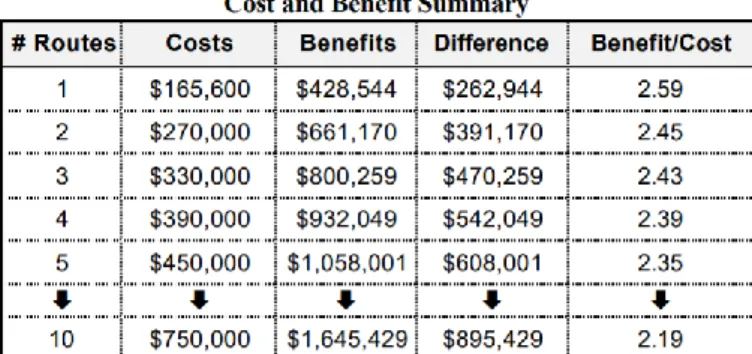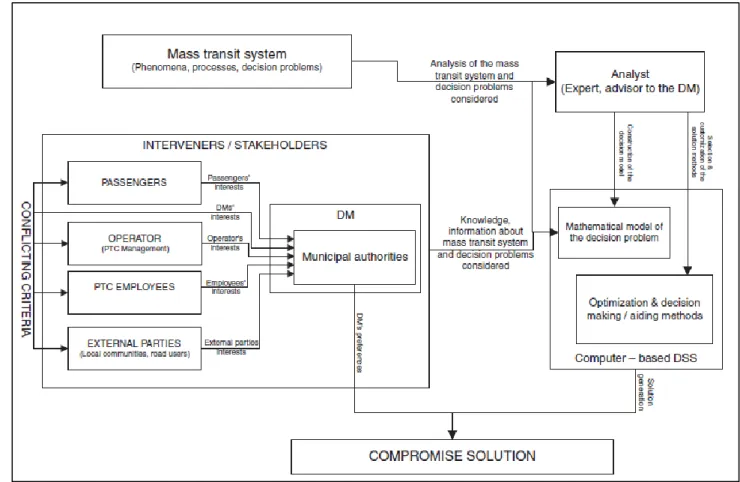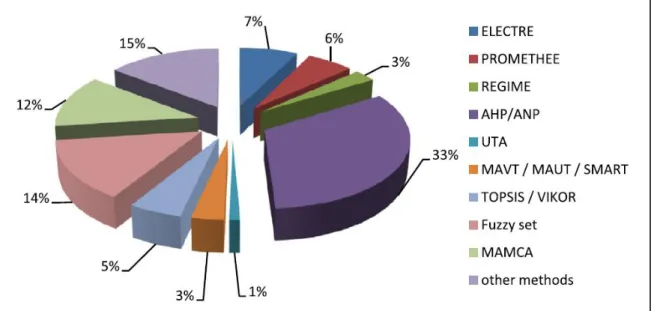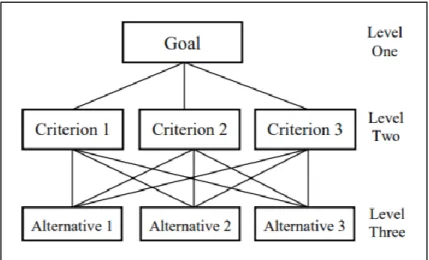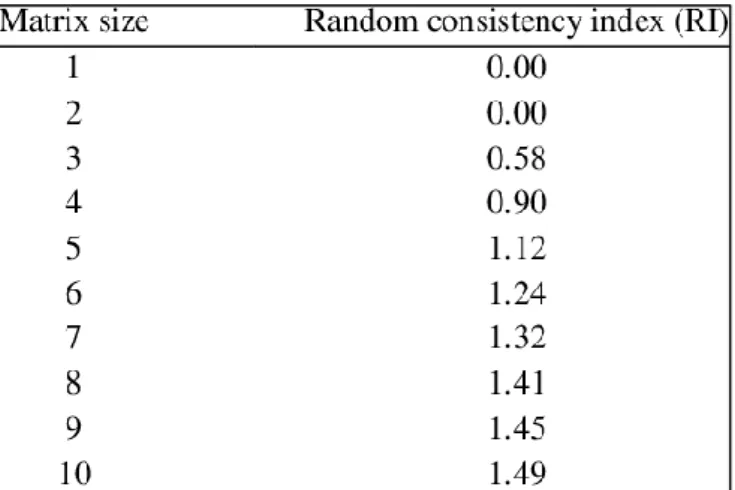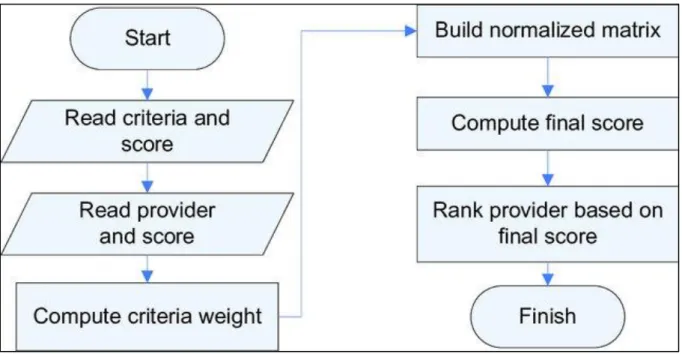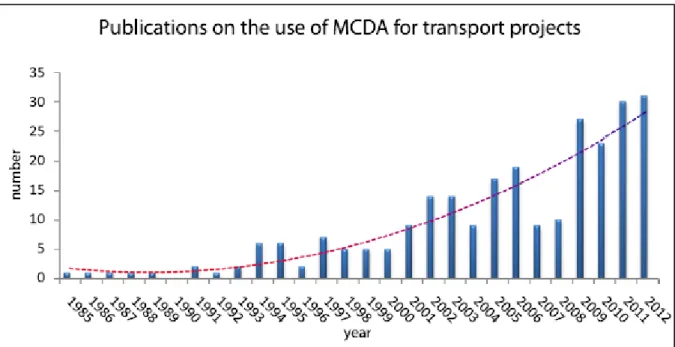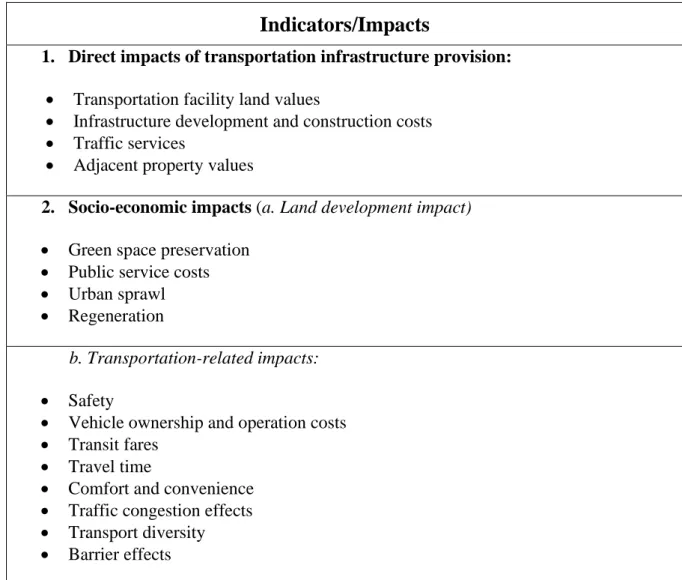In general, a multi-criteria decision problem is a scenario in which a set of actions/solutions (do nothing / rail upgrade / additional buses etc.) and a consistent family of criteria (cost / accessibility / safety etc.) are defined, the decision maker (DM) weighs to determine the best subset of actions and solutions according to criteria (selection problem), divide solutions into subsets representing specific classes of solutions according to concrete sorting rules (sorting problem), or sort actions and solutions. from best to worst, according to criteria (ranking problem) (Zak, 2010). Private sector experts agreed that the general public voted "Safety and Security" as the second most important criterion, along with "Affordability", while the public sector rated "Affordability" as the second most important criterion.
Background to Study
Problems to be Investigated
Purposes of the Investigation
Research Questions
Major Assumptions Made
In order to evaluate each mode of public transport in Cape Town in each scenario evaluated; the subject mode of public transport was assumed to be the main mode. Assumptions were also made to estimate the coverage area around the station of each mode.
Structure of the Thesis
This helped in evaluating the effectiveness of the mode regardless of its competitors. In this chapter, the focus is on qualitative methods, which include quantitative methods, in order to gain deep insight into public transport management and operations, as well as the costs and benefits associated with them, both direct and indirect.
Research Procedure
Sources of information
The City of Cape Town (CoCT) and the Western Cape Government (WCG) were contacted for information on their funding and role in the operation of public transport in Cape Town. The South African Transport Conferences (SATC) were used for information on traffic and public transport in South Africa.
Multi-Criteria Decision Analysis Methods
Analyses Methods
Scenarios Analysed
Criteria and Weighting Used
UNBIASED: The academic (unbiased) view, where each criterion will be weighted equally to determine the effect of the weighting on the results, and. POSTERS: The specialist view, where each criterion will be weighed in by key players in the public transport discipline - this includes civil and transport engineers in industry, Western Cape and City of Cape Town government employees working in their respective departments of transport, academics working in traffic and transport planning, as well as a number of experts outside of traffic engineering, such as environmental practitioners and network planners.
Case Study Evaluation, Results and Analyses
However, as will be discussed, research shows that not all criteria can be considered in a multi-criteria decision analysis, as this leads to inconsistent results. At this stage, the study is broad and therefore the literature review covers a wide range of topics around evaluation methods, (i.e. Cost-Benefit Analysis and Multi-Criteria Decision Analysis methods), costs and benefits of public transport, based on the previously mentioned factors , namely costs (capital, operation, maintenance, decommissioning and construction time), service levels (journey time, amount of passengers carried, convenience, reliability, safety, security, cost to passengers and accessibility) as well as other factors that are affected, such as job creation , environmental effects and effect on property prices.
Evaluation Methods
- Cost-Benefit Analysis Method
- Multi-Criteria Decision Analysis Methods
- Aggregation Methods
- CBA versus MCDA methods
- Time Periods to Evaluate
- Stakeholder Involvement
An example of the AHP method used in transportation valuation can be found in Section 9: Appendices. Where 𝑥𝑖𝑗 is the result of the i-th alternative according to the j-th criterion and 𝑤𝑗 is the weight of the criteria.
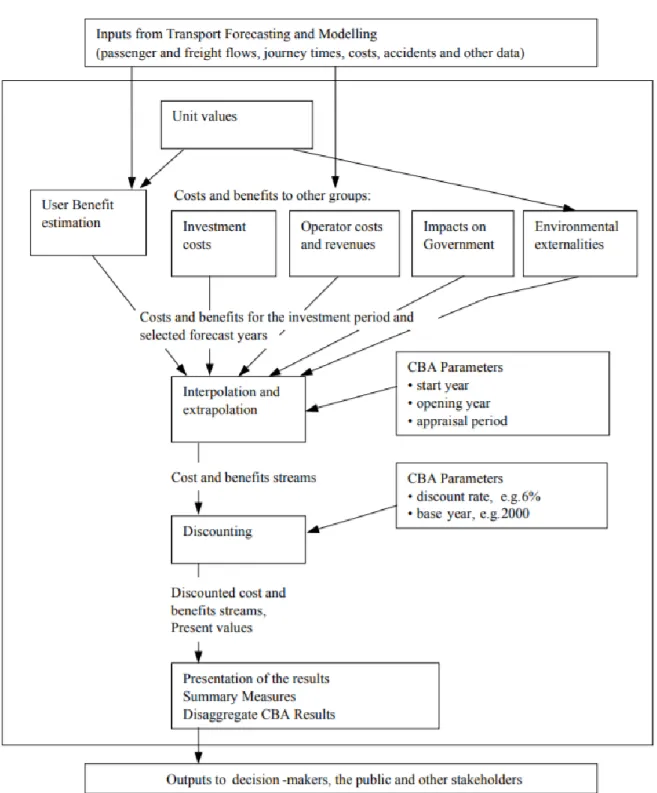
Criteria Included in the Investigation
- Direct impacts of transportation infrastructure provision
- Socio-economic impacts (a. Land development impact)
- Socio-economic impacts (b. Transportation-related impact)
- Socio-economic impacts (c. Socio-economic development impact)
- Socio-economic impacts (d. Impacts on government fiscal balances)
- Transport network effects
- Energy and environmental impacts
Adjacent property values refer to the change in real estate values as a result of the provision and operation of the new transport infrastructure (Ustaoglu & Williams, 2020). A general increase in residential property values in close relation to the Gautrain railway stations was found. Transport tariffs: Costs and revenues of public transport tariffs to the users and system providers (Ustaoglu & Williams, 2020).
Reliability' and 'Quality of Transport Services' are linked to the criteria listed in 3.2.3 and careful consideration must be made not to double count the effects of the public transport alternative.
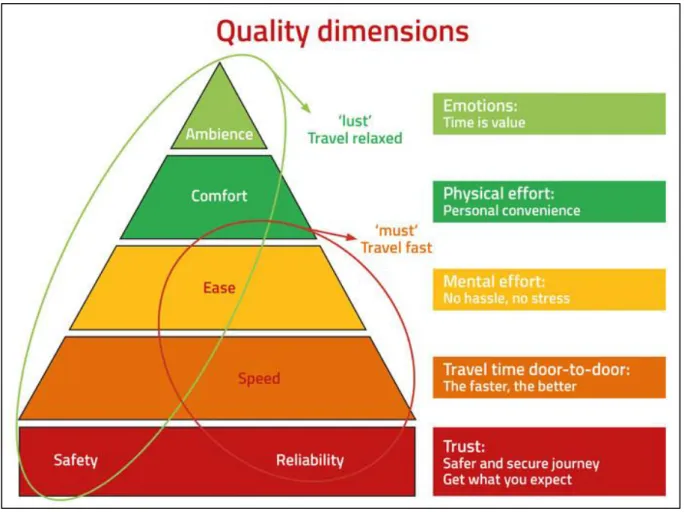
External Factors Affecting Public Transport Evaluation
It should be noted that, along with the factors discussed above, the success of public transport is influenced by the number of passengers, as a number of effects are estimated on the prediction of the number of passengers (Ferreira & Lake, 2002). There is little benefit to society if public transport is simply introduced and operated; most of the benefits depend on the extent to which the service is used, reducing congestion, road wear and tear, car park expansions, etc. According to Marsay (2017), It should also be noted that the gains are greater from the introduction of new transport infrastructure than from upgrades of already existing infrastructure.
This research examined the current state of public transport in Cape Town and the possibilities for improving the method used in the evaluation of public transport projects.
Criteria Analysed
- Cost-effectiveness
- Land-Use and Integration
- Affordability for Users
- Social Goals (Access)
- Speed
- Convenience & Reliability
- Environmental Impacts
- Safety
- Economic Development
It should be noted that the "Convenience & Reliability" criteria were combined and, as mentioned, are related to "Accessibility" and "Speed", since the convenience of public transport is often in relation to the easy access and the travel time. The "safety criterion" is twofold and refers to both the safety and security of the user as well as the public mode of transport. The criterion "Economic development" refers to the effect of implementing public transport on the economy.
Based on the above, the 'Economic Development' criterion was not included in the MCDA, as the effects of public transport on employment and access will be measured in 'Access', 'Speed'.
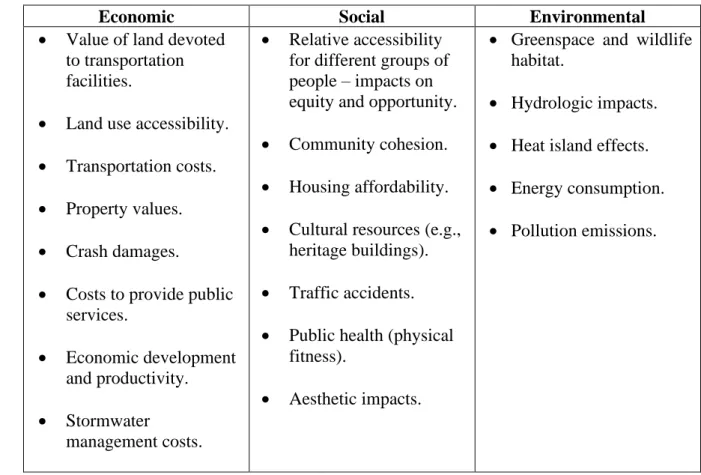
Criteria Selection
The “environmental impacts” refer to the impact that the different modes of transport will have on the environment. For the purpose of this study, the study focused on an estimate of the number of grams of CO2 per passenger kilometer based on the available secondary data. Direct factors, such as an increase in employment directly related to the new public transport, and an increase in time and cost savings.
There are other indirect and induced factors, such as increased access and mobility, which lead to increased factors of employment achievement and purchases in materials and services directly related to public transport (Rodrigue & Notteboom, 2020).
Scenarios Analysed
- Existing Rail
- Existing Bus Service
- Existing BRT Service
- Existing Minibus Taxi Service
- Proposed Integrated Public Transport System
The Southern Suburbs Line runs from Simonstown through Retreat, Claremont, terminating in Cape Town. Cape Flats Line from Retreat through Ottery and Athlone terminating in Cape Town. MetroRail) Southern Suburbs Line from Simonstown through Retreat, Claremont, terminating in Cape Town.
MetroRail) Malmesbury/Worcester line from Malmesbury or Worcester ending in the City of Cape Town.
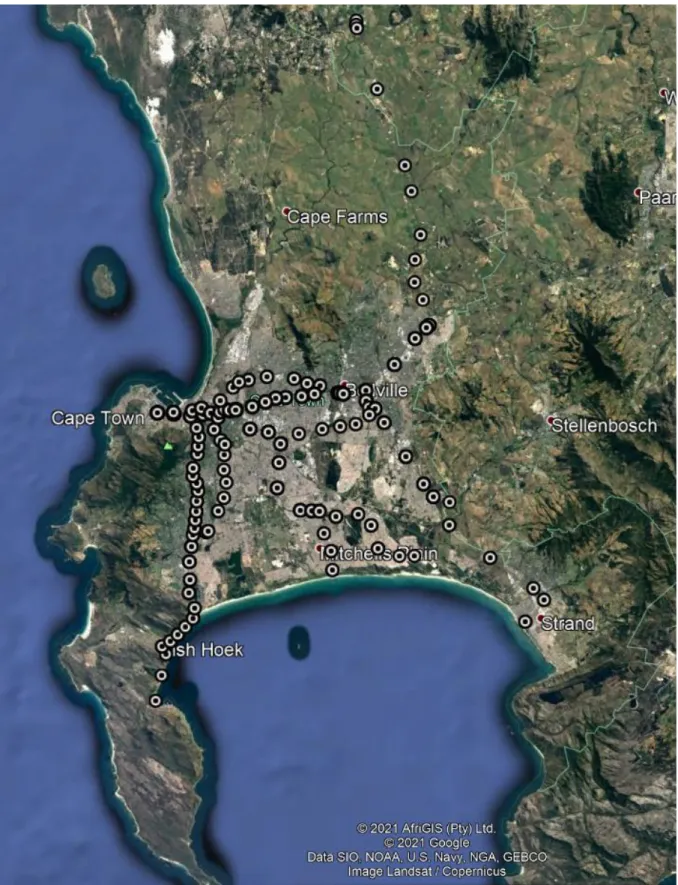
Evaluation of The Different Modes
Cost
Land-Use
Affordability
Accessibility
Speed
Convenience
Reliability
Environment
Safety
ANALYSIS AND RESULTS
Weighting of Criteria
As discussed in Section 3.1.2.1, the method for AHP Analysis is explained and applied to the weighting of the selected criteria. Three academics working in Transport and Traffic Engineering – one academic from the University of Cape Town, one academic from Stellenbosch University and one from the Cape Peninsula University of Technology. The results were aggregated and the average ratings for were obtained as shown in Table 6: Average values assigned via survey results and Table 7: Average values assigned via general public survey results.
The consistency ratio was calculated using the equation mentioned in Section 3.1.2.1 together with Figure 6: Random Consistency Index (Source: Saaty, 1980) and was found to be 0.04 for the specialist weighting and 0.06 for the general public, both of which are less than 0.1 and is therefore considered acceptable.

Weighted and Unweighted MCDA using SAW Method
Then the final score per alternative was calculated using the sum of the values in the normalized matrix multiplied by the weights that were calculated. As can be seen in the results above, the specialist and public weights lead to the same ranking of alternatives, while the unweighted analysis ranks slightly differently, but the worst alternative is common among all three analyses.
Weighted and Unweighted MCDA using EVAMIX Method
As can be seen from the results in Table 18, all three weights have slightly different rankings, but the best alternative is common among them.

Aggregation of Results
As seen in Table 19, there are slight differences in the rankings, but it is clear that the integrated transport system is considered to be the 'best' existing option and the current BRT system is considered to be the worst.
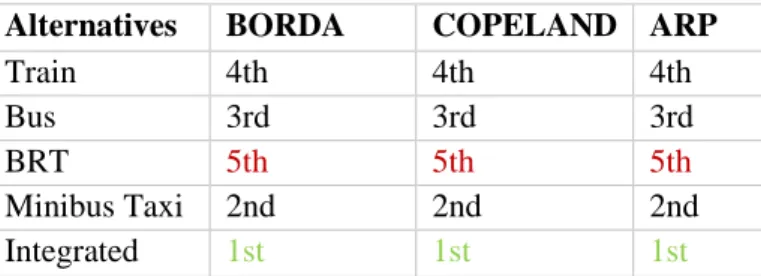
DISCUSSION
CONCLUSIONS
But since all modes of transport will still be in operation - the costs associated with the integrated public. Thus, accessibility was calculated to be approximately 7% of the Cape Town area. As mentioned, this is a theoretically proposed solution and therefore no exact data is available as all modes of transport will still be in operation – the emissions associated with the integrated public transport system were calculated on a pro-rata basis using CO2 passenger kilometers and kilometers travelled. per mode of transport.
Safety in the vehicle: The average obtained for passenger safety in the train is 2.54. Safety in the vehicle: The average obtained for the safety of the passenger in the bus is 2.23. Safety in the vehicle: The average obtained for passenger safety in the MyCiTi bus is 2.23.
Safety of the vehicle: The mean obtained for the safety of the passenger on the minibus taxis was found to be 2.31. The condition to be implemented or upgraded is often determined using the Cost-Benefit analysis, which has been shown to provide justified solutions, but another method of evaluation is possible - multi-criteria decision analysis.
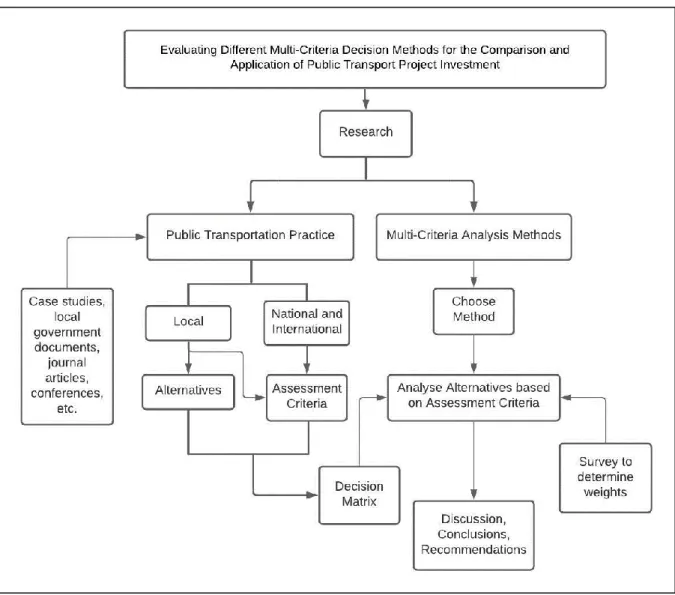
RECOMMENDATIONS
BIBLIOGRAPHY
Available at: https://www.gov.za/documents/national-transport-policy-white-paper#art%201 [Accessed 23 January 2021]. The integration of informal minibus taxi transport services into formal public transport, Cape Town: University of Cape Town. Available at: https://www.eea.europa.eu/media/infographics/co2-emissions-from-passenger-transport/view.
Affordability and subsidies in urban public transport: assessing the impact of public transport affordability on subsidy allocation in Cape Town.
APPENDICES
How do you assess that LAND USE & INTEGRATION compares to AFFORDABILITY regarding public transport. How do you assess that AGRICULTURE & INTEGRATION can be compared with ACCESSIBILITY regarding public transport. How do you assess that AGRICULTURE & INTEGRATION can be compared to SPEED in terms of public transport.
How do you think LAND USE and INTEGRATION compare to ENVIRONMENTAL EFFECTS in relation to public transport.
